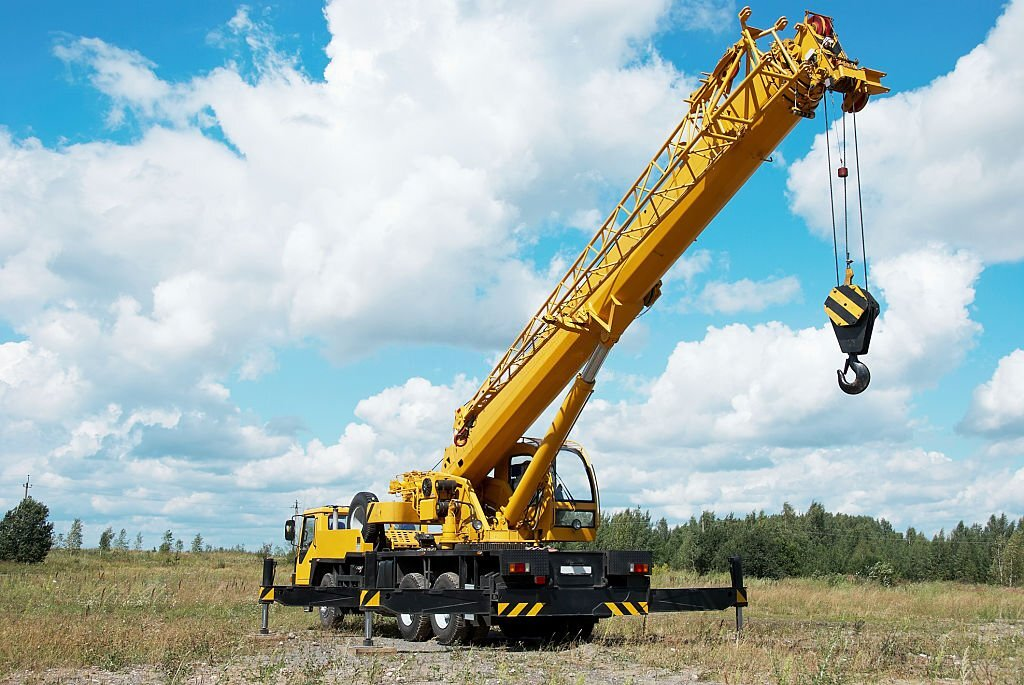
You’ve probably seen an excavator at work on a construction site, effortlessly digging up the earth, lifting heavy objects, and demolishing structures with incredible precision. But have you ever wondered how these powerful machines actually work?
In this article, we’ll explore the fascinating mechanics behind excavators, explaining the components and systems that enable them to perform such a wide range of tasks with efficiency and ease. To truly understand how an excavator works, you’ll need to familiarize yourself with its key components, the role of hydraulics in its operation, and the principles of leverage and force distribution.
Components of an Excavator
You’ve got to check out the key components of an excavator that make it such a powerful and versatile piece of equipment!
First, there’s the undercarriage which provides stability, support, and mobility for the entire machine. It consists of tracks, track rollers, idlers, and sprockets that allow the excavator to move across various terrains. Proper excavator maintenance of the undercarriage is crucial, as it can help extend the life of your machine and ensure optimal performance. Skilled operators can prevent unnecessary wear and tear on the components, making operator training an essential part of maintaining the undercarriage.
The Role of Hydraulics
Let’s dive into the role of hydraulics in excavators. We’ll focus on hydraulic pumps and motors, hydraulic cylinders and valves, and the importance of hydraulic fluid and pressure. These components work together to provide the power and precision needed for efficient excavation tasks.
Get ready to understand the fascinating world of hydraulics that makes these machines so capable and versatile.
Hydraulic Pumps and Motors
In an excavator, hydraulic pumps and motors play a crucial role by converting mechanical energy into fluid power, enabling you to dig and move materials with ease. To ensure optimal performance, it’s essential to keep up with hydraulic maintenance. This can directly impact the pump efficiency and the overall functioning of the excavator.
Regularly checking and replacing hydraulic fluid, inspecting hoses and fittings for leaks, and monitoring the system for signs of wear or damage will keep your excavator running smoothly. It will also help prevent costly repairs down the line.

Hydraulic Cylinders and Valves
Hydraulic cylinders and valves are critical to your excavator’s performance, so it’s essential to understand their functions and keep them in tip-top condition.
Hydraulic cylinders convert the hydraulic fluid’s energy into mechanical force, allowing your excavator to perform tasks like digging and lifting. These cylinders consist of a piston and a cylinder barrel, where the piston moves up and down within the barrel, driven by the pressurized fluid.
On the other hand, hydraulic valves control the flow and pressure of the fluid within the system, ensuring the safe and efficient operation of your excavator.
Hydraulic Fluid and Pressure
Maintaining the right hydraulic fluid and pressure in your system is crucial for optimal performance and efficiency. Hydraulic maintenance is essential for preventing costly repairs and ensuring your excavator functions smoothly.
To keep the system in top shape, you need to monitor fluid levels, use the appropriate fluid types, and maintain the correct pressure in the hydraulic lines. When it comes to fluid types, it’s important to choose the right one for your excavator. The manufacturer’s recommendation is usually the best option, as using the wrong fluid can lead to increased wear and tear on components, reduced efficiency, and potential system failure.

Leverage and Force Distribution
As you explore the world of excavators, it’s important to consider the significance of leverage and force distribution in their operation.
The mechanical advantage of the boom and stick is crucial for the bucket force and digging efficiency. When you understand these concepts, you’ll gain insight into how excavators can perform heavy tasks with ease and precision.
Make sure to adjust the paragraph structure by logically grouping complete sentences on their own lines, with a double new line after.
Mechanical Advantage of Boom and Stick
You’ll find that the mechanical advantage of the boom and stick in an excavator dramatically improves its power and efficiency for digging and lifting tasks. The boom geometry and stick optimization play crucial roles in enhancing the machine’s overall performance.
A well-designed boom and stick assembly allows the excavator to generate greater force with less input, enabling it to dig deeper and lift heavier loads without overexerting the hydraulic system or the machine’s structural components.

Bucket Force and Digging Efficiency
Enhancing bucket force and digging efficiency is essential for completing tasks with precision and speed, ultimately contributing to a more sophisticated and productive machine performance. As an excavator operator, you must understand the importance of maintaining proper bucket force and balance during digging operations. This not only ensures optimal digging capacity but also helps in preventing structural damage to the excavator itself.
Excavator maintenance plays a crucial role in achieving this, as it involves regular checks and adjustments to the hydraulic system, as well as inspection of wear and tear on the bucket and its attachments. By keeping your excavator in top condition, you can avoid potential problems and ensure the longevity of your machine.
Control Systems and Operator Interface
In an excavator, you’re in control through sophisticated systems and an intuitive operator interface designed for efficiency and comfort. Operator ergonomics is a key focus in the design of these machines, ensuring that the controls are easy to use, comfortable, and within easy reach of the operator.

Control precision is also crucial, as it allows you to perform delicate tasks with accuracy, making your work more efficient and reducing the risk of accidents or damage to the excavator. The primary control system in an excavator consists of joysticks, foot pedals, and various switches and buttons. These are strategically arranged within the operator’s cabin to allow you to access them effortlessly and to minimize fatigue during long operating hours.
Excavator Applications and Variations
You might be surprised at the variety of excavator attachments, mini excavators, and specialized machines available for different industry applications. These versatile machines can tackle a wide range of tasks, from digging trenches to demolishing structures.
Let’s dive into the different types of excavator attachments, explore the uses of mini excavators, and discover some unique specialized excavators designed for specific industries.
Different Types of Excavator Attachments
There’s a wide range of excavator attachments available, each designed to tackle specific tasks and improve the machine’s versatility. Proper excavator maintenance and attachment compatibility are essential factors to consider when choosing the right attachment for your project.
Some common attachments include buckets, grapples, hydraulic hammers, augers, and rippers. Buckets are used for digging, grading, and loading materials, while grapples help handle loose debris, logs, or scrap materials. Hydraulic hammers break up rocks or concrete, augers drill holes for foundations or utility poles, and rippers loosen compacted soil or break up asphalt.
Mini Excavators and Their Uses
Ever wondered how mini excavators can transform your construction projects and boost productivity? These versatile machines are designed for compact excavation tasks and are perfect for residential projects, where space is limited.
Mini excavators typically have a smaller footprint and lighter weight compared to their full-sized counterparts, allowing them to maneuver through tight spaces and work on fragile surfaces without causing significant damage. With a range of attachments available, you can perform various tasks, such as digging, grading, and backfilling, with ease and precision.
Industry Applications and Specialized Excavators
It’s incredible how specialized excavators have revolutionized various industries, making tasks more efficient and precise than ever before. With unique excavators designed for specific applications, specialized industries can now tackle projects that were once considered too challenging or time-consuming. These machines are tailored to suit the needs of their respective industries, allowing operators to perform tasks with greater accuracy and speed.
Unveiling the Powerhouse: How Hydraulic Excavators Work and Keep Digging

Hydraulic excavators are the workhorses of construction and excavation projects worldwide. These remarkable machines are capable of moving large amounts of earth, digging deep into the ground, and performing precision tasks with ease. In this article, we will delve into the intricate workings of hydraulic excavators, from their hydraulic systems to essential components, and explore the versatile applications of these powerful digging machines.
The Heart of the Machine: Hydraulic System
1. Hydraulic Excavator Fundamentals:
At the core of every hydraulic excavator lies a sophisticated hydraulic system. This system is responsible for powering the machine’s various functions, enabling it to perform tasks like digging, lifting, and maneuvering with precision.
2. Hydraulic Fluid and Pressure:
Hydraulic excavators rely on hydraulic fluid under high pressure to transmit force and power. The pressurized hydraulic fluid flows through a network of hoses, valves, and cylinders to control the machine’s movements and functions.
Components That Make It Tick
1. Digging Arm and Bucket:
The digging arm, often referred to as the boom or stick, plays a pivotal role in excavating tasks. It can be extended or retracted, raising or lowering the bucket as needed. The bucket, attached at the end of the arm, scoops up earth and materials.
2. Left Joystick Controls:
Operators use the left joystick to control the hydraulic excavator’s movements. By manipulating this joystick, they can rotate the machine, control the boom’s up-and-down motion, and operate the bucket for digging, lifting, and dumping.
3. Excavator Attachments:
Hydraulic excavators are versatile machines that can accommodate various attachments. These include grapples, hammers, augers, and thumbs, expanding their capabilities beyond digging and loading.
Applications and Versatility
1. Mini Excavators:
Mini excavators are compact versions of their larger counterparts, ideal for maneuvering in tight spaces. They are often used in landscaping, urban construction, and residential projects.
2. Wheeled Excavators:
Wheeled excavators offer increased mobility on roads and job sites with established surfaces, making them suitable for a wide range of applications.
3. Komatsu Excavator and Cat Excavators:
Well-known manufacturers like Komatsu and Caterpillar (Cat) produce a variety of hydraulic excavators, each designed to meet specific needs and performance standards.
4. Suction Excavators:
Suction excavators use a vacuum system to safely excavate around utilities without damaging them, making them ideal for sensitive excavation work.
Maintenance and Longevity
1. Maintenance Schedule:
Proper maintenance is crucial for the longevity and efficiency of hydraulic excavators. A routine maintenance schedule, including fluid checks, filter changes, and inspections, helps prevent breakdowns and ensures the machine operates at its best.
Mini Excavators and Suction Excavators: Precision Tools in Construction and Beyond
In the world of heavy machinery, mini excavators and suction excavators stand out as precision tools that find application in diverse sectors, from construction and mining projects to utility work and beyond. This article explores the roles, functionalities, and safety considerations associated with these compact yet powerful machines, shedding light on proper training, maintenance, and safety protocols for operators.
Mini Excavators: Versatile Compact Powerhouses
1. Mini Excavator Basics:
Mini excavators, often referred to as compact excavators, are small but highly versatile machines designed for precision digging and excavation tasks. Their compact size and maneuverability make them ideal for navigating tight job sites.
2. Control Patterns:
Mini excavators typically offer two control patterns: ISO (International Organization for Standardization) and SAE (Society of Automotive Engineers). Operators can choose the pattern that suits their preference or prior experience.
3. Proper Training:
Operating a mini excavator requires proper training to ensure safe and efficient use. Operators should receive training on machine operation, control patterns, and safety protocols before working on a construction project or job site.
4. Safety Protocols:
Safety is paramount when operating mini excavators. Operators should adhere to safety protocols, including wearing appropriate personal protective equipment (PPE), ensuring safe distances from bystanders, and following site-specific safety guidelines.
Suction Excavators: Gentle Precision in Utility Work
1. Suction Excavator Functionality:
Suction excavators are specialized machines designed for non-destructive excavation. They use a vacuum system to gently remove soil and materials from around utilities, reducing the risk of damage to underground infrastructure.
2. Utility and Construction Work:
Suction excavators are invaluable for utility work, as they can safely expose and repair underground pipes, cables, and other services. They are also used in construction projects where precision excavation is required near sensitive areas.
3. Proper Training and Maintenance:
Operators of suction excavators must receive proper training on the equipment’s operation and maintenance. A well-maintained suction excavator ensures optimal performance and safety.
4. Maintenance Log:
Keeping a maintenance log is essential for tracking and scheduling regular maintenance tasks, such as filter changes, lubrication, and system inspections.
Safety, Maintenance, and the Operator’s Role
1. Excavator Operator’s Manual:
Operators should familiarize themselves with the excavator’s manual, which provides essential information on machine operation, safety precautions, and maintenance requirements.
2. Safety Precautions on the Job Site:
Adhering to safety protocols is essential on any job site. This includes wearing appropriate safety gear, securing the area, and communicating effectively with other workers to ensure everyone’s safety.
3. Heavy Equipment Responsibility:
Excavator operators play a vital role in the safe and efficient operation of heavy equipment. They must exercise caution, precision, and attention to detail to prevent accidents and ensure project success.
The Expert Behind the Machine: The Vital Role of the Excavator Operator
In the world of heavy machinery, excavator operators are the unsung heroes who wield the controls of these colossal machines with precision and expertise. This article shines a spotlight on the excavator operator, the largest excavators they command, the controls they use, the safety protocols they follow, and the essential role they play on the job site.
Masters of the Machine: The Skilled Excavator Operator and Their Vital Role
In the bustling world of construction and excavation, the excavator operator stands as the linchpin, turning the ignition key to immense power and precision. In this article, we’ll delve into the world of excavator operators—their responsibilities, the largest excavators they command, control systems, safety measures, and the essential role they play on every job site.
The Excavator Operator: A Master of Machines
1. Operating an Excavator:
Excavator operators are highly trained professionals entrusted with the task of controlling these colossal machines. They are responsible for digging, lifting, and maneuvering with precision to perform a range of tasks, from creating foundations to clearing debris.
2. Safety Protocols:
Safety is paramount in the world of excavator operation. Operators rigorously adhere to safety protocols, wear the necessary personal protective equipment (PPE), and maintain a secure working environment for themselves and their colleagues.
3. First Dig:
The operator’s first dig is a pivotal moment in any project. Meticulous planning goes into this initial excavation, considering parameters such as depth, width, and soil conditions to ensure both the success of the project and the safety of the crew.
Commanding the Largest Excavators: Power and Precision
1. Largest Excavator Basics:
The largest excavators on the planet are awe-inspiring beasts that can weigh over 1,000 metric tons. These giants find their home in massive construction and mining projects, where their incredible power and digging capabilities are harnessed.
2. Boom Attaches and Other Attachments:
Excavator operators have a range of tools and attachments at their disposal, from buckets to hammers and side cutters. The choice of attachment depends on the task at hand, allowing operators to work with precision and efficiency.
3. Unusual Noises:
Operators are trained to listen for unusual noises or vibrations from the machine, as these can signal mechanical issues. Early detection and reporting of such issues are crucial for maintaining the excavator’s reliability and safety.
Conclusion
In conclusion, you’ve seen how an excavator works by using its components in synergy, with hydraulics playing a crucial role. The combination of leverage and force distribution allows it to perform various tasks with ease and precision.
Now that you understand the basics, you can appreciate the versatility and efficiency of excavators even more. Whether it’s construction, mining, or demolition, these powerful machines make the job easier and quicker for everyone involved.



